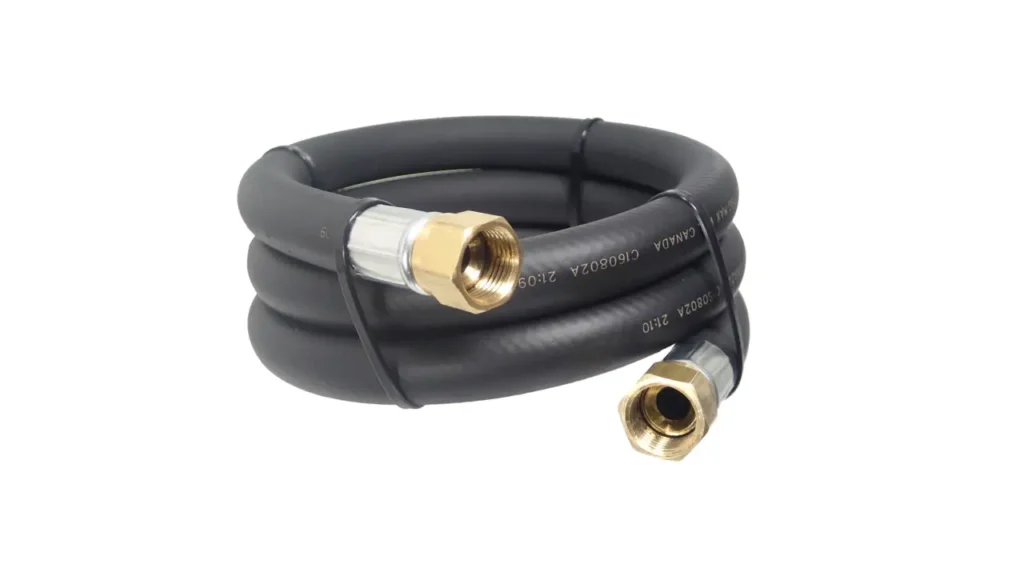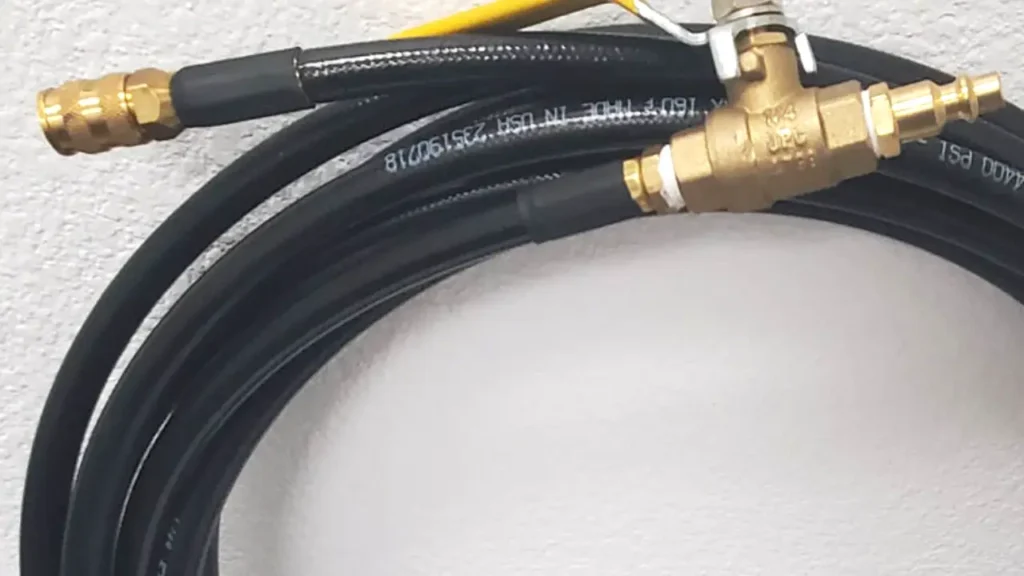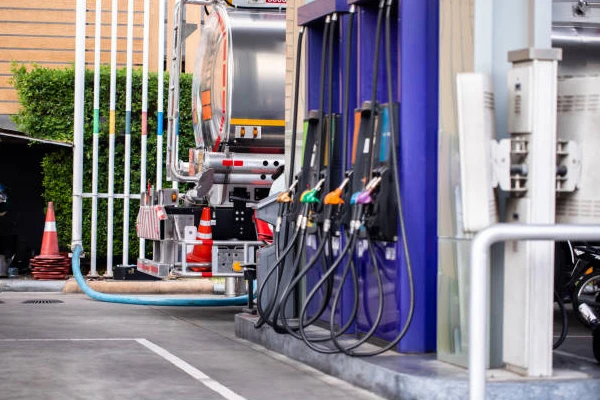Welcome to our guide on maintaining your propane equipment! A crucial yet often overlooked aspect of propane appliance safety and longevity is the cleanliness of your propane hose. Just like any other component, propane hoses can accumulate dirt, debris, and even insect infestations over time. This buildup can lead to restricted gas flow, inefficient appliance operation, and potentially dangerous leaks.
In this blog post, we’ll walk you through a simple yet effective method to clean your propane hose. Regular cleaning not only ensures optimal performance of your grills, heaters, and other propane-powered devices but also contributes significantly to your safety. Let’s dive in and learn how to keep your propane hose in top condition!
What is a Propane Hose

A propane hose is a specialized flexible conduit designed to safely transfer propane gas from a storage tank or cylinder to propane-powered appliances. These propane hoses are crucial for connecting grills, heaters, stoves, RV appliances, and other equipment that rely on propane as a fuel source. They are engineered to withstand the specific pressure requirements of propane and ensure a leak-proof connection for safe operation.
Propane hoses are typically constructed from durable materials like rubber, thermoplastic, or PVC, often reinforced with braiding to enhance strength and prevent kinking or damage. Due to propane’s potential for higher pressure compared to natural gas and its heavier-than-air properties (which can lead to pooling and explosion risks), these hoses undergo rigorous testing and must meet strict safety standards. They often feature specialized fittings at each end to ensure a secure and compatible connection to both the propane tank and the receiving appliance.
How to Clean Propane Hose

Propane-powered appliances offer great convenience, whether you’re grilling in the backyard or staying warm in your RV. However, just like any other piece of equipment, your propane hose requires regular care to ensure safe and efficient operation. Over time, dust, debris, and even grease can accumulate inside and outside the hose, potentially leading to clogs or even damaging the hose material. Taking a few simple steps to clean your propane hose can significantly extend its lifespan and guarantee a consistent gas flow to your appliances. Let’s walk through the easy process together.
Step 1: Gather Your Cleaning Supplies
Before you begin, you’ll want to assemble a few basic cleaning items. You won’t need anything too specialized for this task. A bucket or basin filled with warm, soapy water will be your primary cleaning solution. A mild dish soap is usually sufficient for this purpose; avoid harsh chemicals that could degrade the hose material. You’ll also need a soft brush or sponge to gently scrub the exterior of the hose. Finally, have a clean cloth or towel ready to dry the hose thoroughly after cleaning. Having these items prepared beforehand will make the cleaning process smooth and efficient for you.
Step 2: Cleaning the Exterior of the Hose
Start by disconnecting the propane hose from both the tank and the appliance to ensure your safety during the cleaning process. Once disconnected, take your bucket of warm, soapy water and your soft brush or sponge. Gently scrub the entire exterior surface of the propane hose. Pay close attention to any areas where you notice visible dirt, grease, or grime buildup. The goal here is to remove any surface contaminants that could potentially degrade the hose material over time or make inspection for damage difficult.
After you’ve thoroughly scrubbed the exterior, take your clean cloth or towel dampened with clean water (without soap) and wipe down the hose to remove any soapy residue. It’s important to ensure all soap is removed as it could attract more dirt or potentially affect the hose material if left to dry. Once you’ve wiped it down, use a dry cloth or allow the hose to air dry completely before reconnecting it to your propane tank and appliance. This step prevents any water from entering the hose fittings.
Step 3: Cleaning the Interior of the Hose
Cleaning the interior of your propane hose requires a slightly different approach, as you can’t physically scrub inside it. The primary method involves carefully flushing the hose with compressed air. To do this safely, ensure the hose is disconnected from both the propane tank and the appliance. Then, using a low-pressure setting on your compressed air source, gently blow air through one end of the hose and allow any loose debris or dust inside to exit from the other end.
It’s crucial to use low pressure to avoid damaging the inner lining of the hose. You can repeat this process a few times, alternating the direction of the airflow to dislodge any stubborn particles. Avoid using water or any liquid to clean the interior, as any trapped moisture could lead to corrosion or blockages. After flushing with compressed air, ensure the hose is completely dry internally before reconnecting it to your propane system. This step helps maintain a clear and unobstructed gas flow.
Step 4: Inspecting the Hose After Cleaning
Once your propane hose is clean and dry, take a few moments to carefully inspect it for any signs of wear and tear. Look for cracks, bulges, abrasions, or any other damage to the hose material. Pay close attention to the fittings at both ends, ensuring they are secure and free from corrosion. If you notice any damage, it’s crucial to replace the hose immediately for your safety. Do not attempt to repair a damaged propane hose.
Regular inspection after cleaning is a vital step in maintaining a safe propane system. Even if the hose appears clean, underlying damage can compromise its integrity and lead to dangerous leaks. By taking the time to thoroughly examine your hose, you can identify potential problems early and prevent hazardous situations. If you’re ever unsure about the condition of your hose, it’s always best to err on the side of caution and replace it.
Propane Hose Cleaning Methods

Maintaining a clean propane hose is essential for both safety and the longevity of your propane-powered appliances. Over time, various contaminants can accumulate inside and outside the hose, potentially leading to blockages, reduced gas flow, and even hose degradation. Understanding the different cleaning methods available allows you to choose the most appropriate approach for your specific situation and ensure your propane system operates efficiently and safely. Let’s explore some effective ways to clean your propane hose.
External Wipe-Down
This is the simplest and most frequently recommended method for cleaning the exterior of your propane hose. Regularly wiping down the hose with a damp cloth can remove dust, dirt, grease splatters, and other surface debris. For more stubborn grime, you can use a mild soapy water solution, ensuring you thoroughly rinse the hose with a clean, damp cloth afterward to remove any soap residue. Allowing the hose to air dry completely before reconnecting it is crucial to prevent moisture buildup around the fittings.
Gentle Brushing
For more ingrained dirt or debris on the exterior of your propane hose, a soft brush can be used. A toothbrush or a soft-bristled cleaning brush works well for this purpose. Gently scrub the surface of the hose, paying attention to any textured areas or crevices where dirt might accumulate. Avoid using stiff brushes or abrasive cleaners, as these can potentially damage the hose material. After brushing, wipe the hose down with a damp cloth to remove any dislodged particles and allow it to dry completely.
Compressed Air Flushing
To address potential blockages or loose debris within the interior of your propane hose, using compressed air can be an effective method. Ensure the hose is disconnected from both the propane tank and the appliance before proceeding. Using a low-pressure setting on your compressed air source, carefully blow air through one end of the hose, allowing any loose particles inside to be expelled from the other end. Repeat this process, alternating the direction of airflow, to ensure thorough cleaning. Avoid high pressure, which could damage the inner lining of the hose.
Professional Cleaning or Replacement
In cases of severe blockages, internal buildup that you cannot easily remove, or if you suspect damage to the hose’s integrity, it’s often best to consider professional cleaning or replacement. Some specialized services may offer internal cleaning methods for hoses. However, if the hose is old, shows signs of significant wear and tear, or you are uncomfortable attempting internal cleaning, replacing the hose with a new, certified one is the safest and most recommended course of action to ensure the continued safe operation of your propane system.
Propane Hose Maintenance Tips
Maintaining your propane hose is a crucial aspect of ensuring the safe and efficient operation of your propane-powered appliances, whether you’re enjoying a barbecue or relying on propane for heating. Neglecting hose maintenance can lead to potential hazards and costly repairs down the line. By following some simple yet effective tips, you can significantly extend the lifespan of your propane hose and guarantee a reliable and safe propane supply for all your needs.
Let’s explore some essential maintenance practices.
Regular Visual Inspections: Make it a habit to visually inspect your propane hose before each use. Look for any signs of cracks, bulges, abrasions, cuts, or kinks along the length of the hose. Pay close attention to the areas near the fittings, as these are common points of stress and potential damage. Early detection of wear and tear can prevent dangerous leaks and ensure safe operation of your appliances.
Proper Propane Hose Storage: When not in use, store your propane hose in a cool, dry place away from direct sunlight, extreme temperatures, and potential physical damage. Avoid tightly coiling or bending the hose in sharp angles, as this can weaken the material over time and lead to cracks or blockages. Proper storage helps prolong the lifespan of your hose and maintain its integrity for future use.
Gentle Handling: Treat your propane hose with care during connection and disconnection. Avoid yanking or twisting the hose, as this can stress the fittings and the hose material itself. Ensure that the connections are properly aligned before tightening to prevent cross-threading or damage to the threads. Gentle handling minimizes the risk of premature wear and tear on your propane hose and its components.
Regular Cleaning: Periodically clean the exterior of your propane hose with a damp cloth to remove dust, dirt, and grease. For more stubborn buildup, use mild soapy water and rinse thoroughly with a clean, damp cloth, ensuring it’s fully dry before storage or use. Keeping the exterior clean helps prevent material degradation and makes it easier to spot any potential damage during inspections.
Check for Leaks: Routinely check for propane leaks, especially at the connections. You can do this by applying a soapy water solution to the fittings and hose while the propane is turned on. If bubbles appear, it indicates a leak, and you should immediately turn off the propane supply and address the issue, which may involve tightening the connection or replacing the hose. Leak detection is crucial for safety.
Avoid Over-Tightening: When connecting the propane hose to the tank and appliance, tighten the fittings securely but avoid over-tightening. Excessive force can damage the threads or the fittings themselves, potentially leading to leaks or making future connections difficult. A snug, hand-tightened connection is usually sufficient to create a secure seal for safe propane flow.
Know the Propane Hose Lifespan: Be aware that propane hoses have a limited lifespan, even with proper maintenance. Check the manufacturer’s recommendations for the expected service life of your specific hose. As a general guideline, it’s often recommended to replace propane hoses every 5 to 10 years, regardless of their apparent condition, to ensure continued safety and reliability of your propane system.
Conclusion
In conclusion, maintaining a clean propane hose is vital for safety and optimal appliance performance. Regular inspection and gentle cleaning methods, as detailed in the blog, can prevent clogs and ensure a consistent gas flow. Neglecting hose maintenance can lead to inefficiencies and potential hazards. For a reliable and high-quality propane supply, consider upgrading your hoses.
Looking for durable and dependable propane hoses for your business needs? Kingdaflex offers a wide range of wholesale propane hoses built to meet stringent safety standards and ensure consistent performance. Investing in quality hoses minimizes risks and maximizes the lifespan of your propane-powered equipment.
Don’t compromise on safety and efficiency. Contact Kingdaflex today to explore our wholesale propane hose options and secure a reliable supply for your business!




